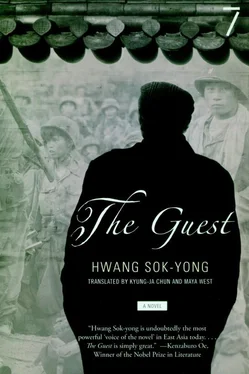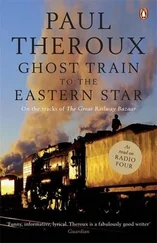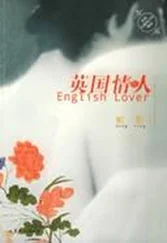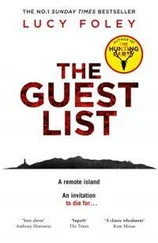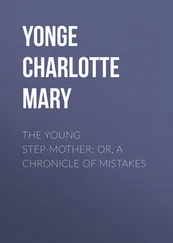12. Farewell Guests
EAT YOUR FILL AND BEGONE!
Hamujagwi , the widower’s ghost, mongdalgwi , the bachelor’s ghost,
gorge yourselves — begone!
Kŏllipkwi , the ghost of the shaman, sinsŏn’gwi , the ghost of the blind,
gorge yourselves — be on your way!
T’ansikkwi , the ghost of the widow, hogugwi , the ghost of the maiden,
gorge yourselves — leave us!
Ghosts of the hanged, up in the mountain’s drooping pine branches,
ghosts of the drowned, down in the bottomless waters,
hat’algwi , the ghosts of the women, shedding all those endless tears—
some died giving birth, some while still pregnant,
all clutching their rice bowls and mats made of straw—
their skirts always tucked, their hair all disheveled,
with scissors and thread still attached to their belts,
gorge yourself — begone!
Ghosts of those shot, pierced, even battered,
ghosts of those bombed by planes overhead,
ghosts of those burnt to ashes by flames,
ghosts hit by wagons, tanks, trucks, or trains,
ghosts made by smallpox, ghosts made by plague,
those made by typhus, consumption, or cholera,
ghosts still resentful, ghosts far from home,
all those who linger, each with its own tale,
today eat your fill, ’til your heart is content,
gorge yourselves — be on your way!
Behold today’s feast, see our devotion,
the ghost of this land, the ghost of this house,
eat your fill and know when to be silent.
Fill your bellies, quench your thirst,
eat your fill and pack up what’s left—
take it all with you, women on your heads,
take it all with you, servants in your aprons—
accept our goodwill, take some coin for the road
and be on your way, up into the heavens.
About the Author

HWANG SOK-YONG is arguably Korea’s most recognized and renowned author. Drawing artistic inspiration from his own experiences as a vagabond day laborer, student activist, Vietnam War veteran, advocate for coal miners and garment workers, and political dissident, he is embraced as a writer and champion of the people. His historical novel Chang Kilsan , an extensive parable about a bandit that described the contemporary dictatorship, was serialized in a daily paper from 1974 to 1984 and sold an estimated million copies in North and South Korea. In 1993 there was international outcry when Hwang was sentenced to seven years in prison for an unauthorized trip to the North to promote exchange between artists in North and South Korea. In 1998, he was granted special pardon by the new South Korean president. The recipient of Korea’s highest literary prizes and shortlisted for the Prix Fémina Étranger, Hwang has seen his novels and short stories published in North and South Korea, Japan, China, France, Germany, and the U.S. Hwang was born in 1943 in Xinjing, Manchuria (now Changchun, China).
1
Ansŏng-daek : traditionally, women who married into the family from a different area were referred to by their place of origin instead of their given name — Ansŏng-daek would originally be from Ansŏng.
2
Chosŏn : Korea.
3
Chŏgori: a short, blouselike top, tied with a long ribbon — part of the traditional Korean costume known as hanbok.
4
Village sarang : a communal room or meeting area used primarily forrecreation.
5
Tongch’imi : a pickled radish side dish that is stored and served in its own juices.
6
Makkŏlli : a thick, unrefined rice wine.
7
Hanbok : the traditional Korean costume consisting of a blouselike top, vest, pants, and coat for men and a top, skirt, and coat for women;although only worn now on special occasions, hanbok was once worn daily.
8
Paji : pants.
9
Magoja : vest, part of the full hanbok costume.
10
Durumagi : coat, part of the full hanbok costume.
11
Mongdang chi’ma : a short, traditional skirt that falls just below the knees.
12
Tojang : a small, cylindrical personal stamp used to sign or authorize official documents.
13
Changsŭng pŏpsu : an iconic representation of a local deity.
14
Ri : a Korean unit of distance equal to 393 meters.
15
Mal : unit of measurement for grains and liquid; two mal equals about ten gallons.
16
Soju: distilled grain-based Korean liquor known for its potency.
17
Maru : a raised wooden floor; the main communal space in a traditional Korean house, sometimes opening onto the yard.
18
Sŏrabŏl : another name for the Silla period (57 B.C.-A.D.935), which was located in a southern region of the Korean peninsula.
19
Pubyŏngnu : a well-known pavillion in Pyongyang that overlooks the Taedong River.
20
Moranbong : a mountain situated slightly to the north of Pyongyang and famed for its beauty.
21
Koryŏ :the Three Kingdoms were united at the beginning of the Koryŏ dynasty (918-1392).
22
Toenjang tchigae : a stew made from toenjang , a soybean paste.
23
Nakchi pokkŭm : sautéed octopus.
24
C hugyŏp ch’ŏngju : bamboo-leaf wine.
25
Ch’ŏlima : this brand name translates to “horse capable of traveling one thousand ri. ”
26
O mija : fruit of the Chinese magnolia vine, often used in Korea to brew tea.
27
Han’gŭl : the Korean alphabet.
28
Komusin : traditional Korean shoes made of rubber.
29
P’yŏng : a unit of measurement equal to about 3.3 square meters.
30
Ten thousand p’yŏng : approximately eight acres.
31
Fifteen thousand p’yŏng : approximately twelve acres.
32
One hundred ri : approximately twenty-four miles.
33
Yangban : formerly the upper class of Korean society; the nobility or aristocrats.
34
Koch’ujang: spicy Korean staple seasoning and side dish made of thick soy paste mixed with cayenne pepper.
35
Chesa : traditional Korean ceremony performed in honor of one’s ancestors.
36
Koch’u: a commonly used colloquial word for “penis,”—it also means “pepper.”
37
Fifteen ri: approximately four miles.
38
Changgi: Korean chess.
39
Hangari : an often large earthenware pot used to store food.
40
Sŭngri : a brand name; in this case, sŭngri is actually the word for “victory.”
41
Tano Festival: traditional Korean festival held on the fifth day of the fifth month according to the lunar calendar.
